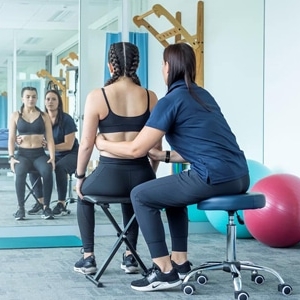By Rose Marchese – Head of Education & Research, Physiotherapist
Adolescents with idiopathic scoliosis (AIS) are often at risk of progression of their curve to the point of surgical recommendation. Surgery is typically recommended for AIS when the curves reach about 45 degrees (Negrini et al, 2018). However surgery for these teens is not a medical emergency and there is sometimes the option to conduct pre-surgical rehabilitation to prepare the teen mentally and physically for the surgery. In these instances it is recommended that physiotherapeutic scoliosis specific exercises (PSSE), such as ScoliBalance®, are performed. Let’s take a look at the different approaches for pre- and post-surgery treatment.
Rehabilitation Prior to Surgery for AIS

The goals of rehabilitation prior to surgery for AIS will be slightly different to post surgery. Depending on the time to wait until surgery, the pre-surgery goals may include:
- Slow the progression of the curve until the time of surgery
- Improve the spinal flexibility to help with the surgical correction
- Manage pain
- Improve posture
- Complement the brace if the teen is wearing a brace.
At ScoliCare, we use ScoliBalance as the PSSE treatment protocol, and if there is a long wait until surgery the patient will often be in a brace called ScoliBrace.
The ScoliBalance treatment for a patient waiting for surgery is not really that much different to that of the patient with a smaller curve. We can still do the typical corrections for the curve type and size, however there may be times where we can apply a larger dosage within the program to somewhat fast track the patient’s improvement and better prepare them for surgery.
For example, in ScoliBalance the patients are often prescribed the ScoliRoll to complement their program. This is an orthotic device that the patient is positioned on and they typically use this once per day for 20-25 minutes. In the lead up to surgery or if the patient has a particularly stiff curve, we may ask them to try using the ScoliRoll twice per day, and to perform the exercises in the program more intensely or for longer duration.
Rehabilitation After Surgery for AIS
The rehabilitation for AIS post surgical fusion will vary to the pre-surgery approach. There are a number of factors to consider when applying rehabilitation in these instances. These considerations include:
- The number of vertebrae fused
- Any remaining curves, e.g. a lumbar curve existing when a thoracic spine has been fused
- The coronal and sagittal balance of the patient post surgery
- Pain and surgical site sensitivity.
The goals of rehabilitation post-surgery will be focused on:
- Improving coronal and sagittal balance
- Protection of the spine above and below the fused vertebrae
- Any remaining asymmetries and improvement of aesthetics
- Return to normal function where possible.
The treatment approach should be modified due to the limitations of movement of the fused spine. Rehabilitation therapists should be trained to be able to modify their PSSE approach to accommodate the post-surgical presentation of the patient.
